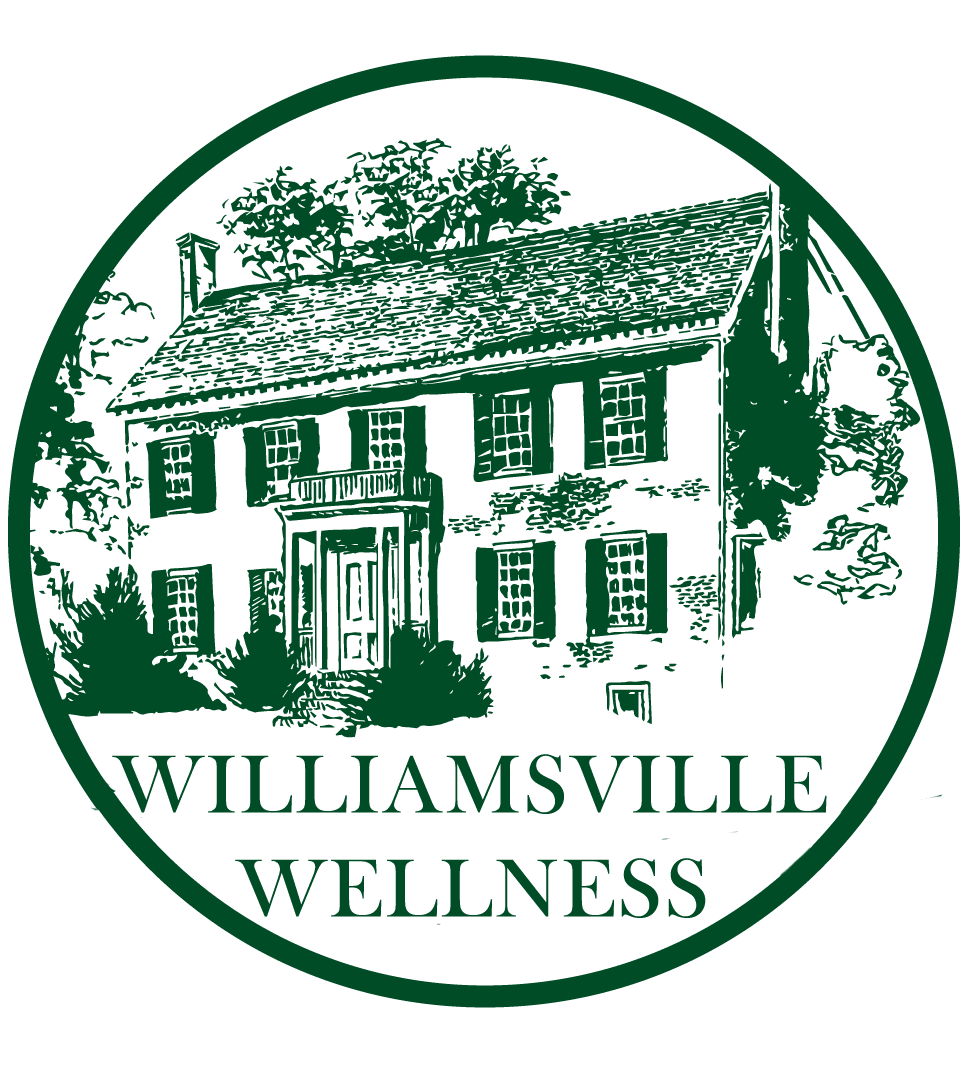Court-Ordered Addiction Treatment

When the Legal System Becomes a Gateway to Healing
For many individuals struggling with substance use disorders, the path to recovery doesn’t always begin with a voluntary decision to seek help. Sometimes, it takes the intervention of the legal system to create an opportunity for healing and transformation. Court-ordered addiction treatment represents a significant shift in how our society addresses substance abuse issues – moving from a purely punitive approach to one that recognizes addiction as a treatable health condition.
At Williamsville Wellness, we’ve witnessed firsthand how court-mandated treatment can serve as a pivotal turning point in many people’s lives. While the circumstances leading to court-ordered treatment are often challenging, they can ultimately open the door to lasting recovery and meaningful change.
This comprehensive guide explores the complex world of court-ordered addiction treatment – from how it works and who qualifies, to its effectiveness and the unique benefits and challenges it presents. Whether you’re facing court-ordered treatment yourself, supporting a loved one through this process, or simply seeking to understand this important alternative to incarceration, this resource aims to provide valuable insights into the intersection of the justice system and addiction recovery.
Understanding Court-Ordered Addiction Treatment
Court-ordered addiction treatment operates on a fundamental principle: addressing the root cause of substance-related offenses is more effective than punishment alone. This approach recognizes that many non-violent crimes stem directly from untreated substance use disorders, and that providing treatment rather than incarceration can break the cycle of addiction and criminal behavior.

What Is Court-Ordered Addiction Treatment?
Court-ordered treatment refers to any substance abuse rehabilitation program that is mandated by a judge as part of a court ruling. This alternative sentencing approach gives individuals the opportunity to receive professional help for their addiction instead of serving jail time, or as a condition of probation, parole, or release.
The structure of these programs varies widely based on:
- The nature and severity of the offense
- The individual’s substance use history
- Available treatment options in the jurisdiction
- The specific requirements set by the presiding judge
Treatment may be ordered before trial, as part of sentencing, during incarceration, or after release. The common thread is that participation is not optional – completion of the program is a legal requirement with consequences for non-compliance.
The Evolution of Court-Ordered Treatment
The concept of court-ordered treatment emerged from the recognition that the traditional criminal justice approach was failing to address the underlying issues driving substance-related crimes. The establishment of the first drug court in Miami-Dade County in 1989 marked a significant turning point, creating a specialized court focused on treatment rather than punishment for drug offenders.
According to the National Institute on Drug Abuse, there are over 4,000 treatment courts operating across the United States, including specialized courts for:
- Adult drug offenders
- Juvenile offenders
- DUI/DWI cases
- Veterans with substance use issues
- Family dependency cases
- Mental health treatment
- Tribal healing and wellness
This evolution represents a growing understanding that addiction is a complex health issue requiring a therapeutic rather than purely punitive response.
Who Qualifies for Court-Ordered Treatment?
Not everyone with a substance use disorder who enters the legal system will qualify for court-ordered treatment. Eligibility criteria typically include:
General Eligibility Factors
- Non-violent offenses: Individuals charged with violent crimes, domestic violence, sex offenses, or drug trafficking are often excluded.
- Connection to substance use: The offense must be directly or indirectly related to substance use issues.
- Criminal history: Many programs exclude those with extensive prior felony convictions.
- Jurisdiction: The crime must have occurred within the court’s jurisdiction.
- No pending charges: Candidates typically cannot have other pending cases in different jurisdictions.
- Treatment suitability: The individual must be assessed as likely to benefit from treatment.
- Mental health considerations: Severe mental health issues that would interfere with treatment participation may disqualify some candidates.
Special Populations and Considerations
Specific court programs may have additional criteria for specialized treatment paths:
- Veterans Treatment Courts specifically serve former military personnel whose substance use issues may be connected to service-related trauma or adjustment difficulties. Our veteran substance abuse treatment program is designed to address these unique needs.
- Family Drug Courts focus on parents whose substance use has impacted child welfare cases, with family reunification as a primary goal.
- DUI/DWI Courts target individuals with multiple impaired driving offenses or first-time offenders with high blood alcohol content.
- Juvenile Drug Courts provide age-appropriate interventions for young offenders whose substance use has led to criminal behavior.
The assessment process typically involves screening by legal professionals, substance abuse counselors, and mental health specialists to determine if court-ordered treatment is appropriate.
The Court-Ordered Treatment Process
Initial Assessment and Sentencing
When a judge determines that court-ordered treatment is appropriate, the process typically begins with:
- Comprehensive evaluation: A thorough assessment of the individual’s substance use history, mental health status, treatment needs, and recovery resources.
- Treatment planning: Development of an individualized plan that specifies the type, duration, and components of treatment required.
- Court hearing: Formal sentencing where the judge outlines the terms of the court order, including treatment requirements and consequences of non-compliance.
Types of Court-Ordered Treatment Programs
Court-ordered treatment can take many forms, depending on the individual’s needs and the court’s requirements:

Educational Programs
These typically involve structured classes about substance use, its effects, and strategies for prevention. Often used for first-time offenders, particularly in DUI/DWI cases, these programs generally last 10-15 weeks and focus on:
- Understanding addiction as a disease
- Recognizing risk factors and triggers
- Learning coping strategies
- Developing relapse prevention skills
Outpatient Treatment
This allows individuals to receive treatment while maintaining their daily responsibilities. Components often include:
- Individual counseling sessions
- Group therapy meetings
- Regular drug and alcohol testing
- Check-in appointments with probation officers
- Community support group attendance
Intensive Outpatient Programs (IOPs)
These provide a higher level of care than standard outpatient services, typically involving:
- Multiple treatment sessions per week (usually 9-12 hours)
- More structured therapeutic activities
- Frequent monitoring and drug testing
- Both individual and group counseling approaches
Residential/Inpatient Treatment
For more severe cases, courts may order residential treatment, which involves:
- 24/7 supervised care in a treatment facility
- Removal from triggering environments
- Comprehensive therapeutic programming
- Medical supervision, especially during detoxification
- Intensive counseling and skill-building activities
- Typical durations of 28-90 days
Our drug and alcohol 28-day program provides comprehensive residential care designed to address the complex needs of court-ordered clients.
Medication-Assisted Treatment (MAT)
Particularly for opioid and alcohol use disorders, courts increasingly recognize the value of medication-assisted treatment, which combines:
- FDA-approved medications to manage cravings and withdrawal
- Behavioral counseling and therapy
- Regular medical monitoring
- Integration with other recovery supports
Monitoring and Compliance
A critical component of court-ordered treatment is ongoing monitoring to ensure compliance with program requirements. This typically includes:
- Regular court appearances: Scheduled check-ins with the judge to review progress
- Drug and alcohol testing: Random and scheduled screenings
- Probation oversight: Regular meetings with probation officers
- Treatment provider reports: Updates from counselors and therapists
- Electronic monitoring: In some cases, ankle monitors or other tracking devices
The frequency and intensity of monitoring usually decrease as individuals demonstrate consistent compliance and progress in recovery.
Effectiveness of Court-Ordered Treatment

One of the most common questions about court-ordered treatment is whether it can be effective if the individual hasn’t voluntarily chosen to seek help. Research provides encouraging answers to this important question.
Research-Backed Results
Studies consistently show that court-ordered treatment can be as effective as voluntary treatment in many cases, with some key findings:
- Reduced recidivism: Data indicates that drug court participants are between 6-26% less likely to be rearrested than similar offenders who don’t participate in treatment programs.
- Completion rates: Research has found that mandated clients often have higher treatment completion rates than voluntary clients, likely due to the external accountability provided by court oversight.
- Long-term outcomes: Follow-up studies at 3, 5, and 10+ years post-graduation show persistently lower re-offense rates among treatment program graduates.
- Sustained sobriety: Even participants who initially show lower motivation for change often demonstrate similar levels of abstinence at follow-up compared to voluntary treatment participants.
A pivotal study published in the Journal of Substance Abuse Treatment found that individuals mandated to treatment were over ten times more likely to complete the program compared to those who entered voluntarily, highlighting how external motivation can lead to meaningful engagement with the recovery process.
The Motivation Paradox
Interestingly, while court-ordered clients often begin treatment with lower intrinsic motivation, many develop internal motivation during the treatment process. Several factors contribute to this shift:
- Exposure to treatment benefits: As individuals experience improvements in their physical and mental health, relationships, and overall functioning, their internal motivation often grows.
- Peer influence: Interaction with others in recovery, including those who entered treatment voluntarily, can inspire motivational change.
- Therapeutic alliance: Developing trust with counselors and therapists helps individuals recognize the value of the recovery process.
- Skill development: Learning new coping mechanisms for addiction recovery increases confidence and hope, enhancing motivation.
This transformation from external to internal motivation is a key factor in the long-term success of court-ordered treatment.
Benefits and Challenges of Court-Ordered Treatment
Key Benefits
Court-ordered treatment offers numerous advantages compared to traditional incarceration:
Benefits for Individuals
- Access to treatment: Many people who need addiction treatment never receive it; court mandates provide access they might not otherwise have.
- Avoidance of incarceration: Treatment provides an opportunity to avoid or reduce jail time and the associated negative impacts on employment, housing, and family connections.
- Comprehensive services: Many court-ordered programs include not just addiction treatment but also assistance with employment, education, housing, and other needs.
- Structure and accountability: The external structure and oversight can help individuals stay committed to recovery during the difficult early stages.
- Potential for record expungement: Some programs offer the possibility of having charges reduced or expunged upon successful completion.
Benefits for Society
- Cost savings: Treatment is typically far less expensive than incarceration, with studies showing average savings of $5,680-$6,208 per participant.
- Reduced criminal activity: By addressing the root cause of substance-related crimes, treatment reduces future criminal behavior.
- Family preservation: Particularly in family drug courts, treatment can prevent long-term family separation and reduce foster care costs.
- Community safety: Sustainable recovery leads to safer communities with lower crime rates.
- Workforce participation: Successful participants return to productive roles in society, contributing economically rather than consuming costly criminal justice resources.
Challenges and Limitations
Despite its benefits, court-ordered treatment faces several challenges:
Individual Challenges
- Initial resistance: Many participants enter treatment unwillingly, creating barriers to engagement.
- Practical obstacles: Transportation, childcare, employment conflicts, and other logistical issues can make program participation difficult.
- Financial concerns: Even when treatment is court-ordered, participants are often responsible for some or all of the costs. Understanding insurance coverage can help address these concerns.
- Stigma: Court-ordered treatment carries dual stigma related to both legal involvement and addiction.
System Challenges
- Resource limitations: Many jurisdictions lack sufficient treatment options, creating waiting lists and gaps in care.
- Coordination complexities: Effective programs require seamless collaboration between courts, treatment providers, probation services, and other agencies.
- Consistency issues: The quality and approach of court-ordered programs vary widely across jurisdictions.
- Tailoring treatment: One-size-fits-all approaches fail to address the specific needs of diverse populations.
Navigating Court-Ordered Treatment Successfully
Whether you’re personally facing court-ordered treatment or supporting someone who is, these strategies can help maximize the benefits of the experience:
For Individuals Entering Treatment
- Shift your perspective: Try to view the court order as an opportunity rather than a punishment. This mental reframing can significantly impact your experience.
- Be honest during assessment: Providing accurate information about your substance use and history ensures you receive appropriate treatment.
- Understand all requirements: Make sure you clearly understand what’s expected of you, including attendance requirements, drug testing protocols, and court appearances.
- Actively participate: Engage fully in treatment activities rather than simply “showing up.” Active participation leads to better outcomes.
- Build a support network: Connect with others in recovery, both inside and outside your mandated program.
- Address practical barriers: Work with your treatment team to overcome obstacles like transportation or scheduling conflicts.
- Continue after completion: Consider maintaining some form of support after your court-ordered treatment ends.
For Family Members and Supporters
- Educate yourself: Learn about addiction, treatment approaches, and the specific requirements of your loved one’s program.
- Maintain appropriate boundaries: Support without enabling, and recognize that recovery is ultimately the individual’s responsibility.
- Attend family programs: Many court-ordered treatment programs include family components designed to help heal relationships and build support systems.
- Practice patience: Recovery is rarely linear; prepare for potential setbacks and celebrate small victories.
- Consider your own support: Groups like Al-Anon and Nar-Anon can provide valuable guidance and community for those supporting someone in recovery.
Understanding how family dynamics influence addiction can provide valuable insight into the recovery process.
Court-Ordered Treatment at Williamsville Wellness
At Williamsville Wellness, we understand the unique dynamics of court-ordered treatment and have developed specialized approaches to serve this population effectively. Our court-ordered treatment program incorporates several distinctive elements:
Our Approach to Court-Ordered Treatment
- Thorough assessment: We conduct comprehensive evaluations to identify not just substance use patterns but also co-occurring mental health conditions, trauma history, and other factors that may influence recovery.
- Individualized treatment planning: Rather than offering a standardized program for all court-ordered clients, we develop personalized plans that address specific needs while meeting court requirements.
- High staff-to-client ratio: Our treatment model provides more individual therapy sessions than most programs, creating opportunities for deeper therapeutic work and stronger therapeutic alliances.
- Trauma-informed care: Recognizing the high prevalence of trauma among justice-involved individuals, our approach incorporates trauma-specific interventions.
- Integration of evidence-based practices: We utilize proven therapeutic modalities including Cognitive-Behavioral Therapy, Motivational Interviewing, and DBT emotion regulation skills.
- Seamless court coordination: Our staff maintains clear communication with probation officers, drug court teams, and other justice system partners.
Comprehensive Services
Our court-ordered treatment programs include:
- Residential/inpatient treatment for those requiring intensive support
- Partial hospitalization programs (PHP) as a step-down from residential care
- Intensive outpatient programs (IOP) for those able to maintain daily responsibilities
- Regular outpatient services for ongoing support
- Specialized tracks for specific populations, including veterans
- Family involvement to strengthen support systems
- Aftercare planning for sustainable recovery
For those wondering about treatment duration, our guide on how long residential rehab lasts provides helpful information about typical program lengths and what to expect.
Important Program Limitations
To ensure transparency and appropriate treatment matching, it’s important to understand that our court-ordered treatment programs do not include:
- Services for patients under 18: We are an adult-only facility specializing in treatment for individuals 18 years of age and older.
- Medical detoxification services: As we are not a medical facility, individuals requiring detoxification must complete this process at an appropriate medical facility before beginning treatment at Williamsville Wellness.
- Medication-Assisted Treatment (MAT): We do not provide medications such as Suboxone, methadone, or other MAT options.
These limitations help ensure that each client receives the most appropriate level of care for their specific needs. Our admissions team will work with you to identify suitable resources for any services we don’t provide.
Documentation and Reporting
For court-ordered clients, we provide:
- Regular progress reports to the court
- Documentation of attendance and participation
- Verified drug and alcohol testing results
- Discharge summaries with recommendations for continuing care
Our goal is to help clients not just complete their court-ordered requirements but to experience genuine transformation that continues long after legal obligations are fulfilled.
We also offer virtual addiction treatment programs for those who may benefit from remote participation while meeting court requirements.
Beyond Compliance to Transformation
Court-ordered treatment represents a crucial bridge between the justice system and healthcare, offering individuals caught in the cycle of addiction and criminal behavior an opportunity to address the root causes of their legal troubles. While the path begins with external motivation and mandates, it can lead to profound internal change and lasting recovery.
The evidence is clear: treatment works, even when it isn’t initially voluntary. By combining accountability with compassionate care, court-ordered programs help individuals develop the insights, skills, and support networks necessary for sustained recovery.
At Williamsville Wellness, we’ve witnessed countless stories of transformation that began with a court order – individuals who initially arrived resistant and reluctant, only to discover a path to a healthier, more fulfilling life free from the grip of addiction. We believe in the potential for change in every person who walks through our doors, regardless of what brought them here.
If you or someone you care about is facing court-ordered treatment, remember that this mandate can be the beginning of a new chapter rather than simply a legal obligation to fulfill. With the right approach and support, it can become a turning point toward lasting recovery and a life no longer defined by substance use or involvement in the criminal justice system.
You can read more addiction recovery stories from individuals who have successfully completed treatment programs and transformed their lives.
Ready to Take the Next Step?
Whether you’re seeking information about court-ordered treatment options, need help with a loved one’s situation, or are a legal professional looking for treatment resources for your clients, Williamsville Wellness is here to help.
Our admissions team can answer your questions about our court-ordered treatment programs, verify insurance coverage, and guide you through the process of beginning treatment. We work closely with courts across the region and understand the specific requirements and documentation needed.
For more information about our programs and approach, visit our about us page or review our frequently asked questions.
Call us today at 804-655-0094 to speak with an admissions counselor, or contact us through our website to learn more about our programs and approach.
Ready to Get Started?
Reach out to Williamsville Wellness and take the first step.



